20 Historical Then and Now Photos of Rockville
Have you ever wondered what Rockville looked like a century ago? Old photos have an amazing way of showing us what life was like years ago and depicting how our communities once looked. You might not realize how much things have changed until you look back and see what it looked like in the past. For this post, I have chosen some of Lewis Reed’s original photographs of landmark buildings and streetscapes and paired them with a Google image to show how the city has transformed over the years. Some historic buildings have been substantially modified; others are gone entirely. Of course, historic buildings are sometimes removed to make way for something even better – look and decide for yourself. As always, click the photos to get a better look.
The Halpine Store, 1906 The Halpine Store, also known as the Lenovitz General Store, was built on Rockville Pike in 1898, taking advantage of the prime location on the trolley and railroad lines and the Pike. The store sold food, gasoline and other items to locals and Pike travelers. There is a young African American man standing in front of the store. Note the telephone or telegraph poles, and the trolley tracks paralleling the road. The nearby Halpine railroad station also brought customers to the area, and the store became the social/community gathering place for the Halpine area.
The proprietors, Benjamin and Anna Lenovitz, lived on the second floor. The building burned in 1923 and a new fire-resistant brick building was rebuilt in its place. This building, at 1600 Rockville Pike, became a Radio Shack, selling computers and electronics. Rockville Pike is now six lanes, linking the once outlying Halpine and Montrose with Rockville’s town center in one long strip of commercial enterprises and office buildings.
Vinson’s Pharmacy, 1906 Vinson’s Pharmacy was built in the 1880s and was run by Robert William “Doc” Vinson from 1900 until his death in 1958. The store had previously been owned and/or operated by several men, including D.F. Owens and E.T. Fearon. The drugstore was a popular gathering place for city politicians, and that President Woodrow Wilson once personally traveled there to buy Wolfhound tablets. In the photo below, taken in downtown Rockville, a delivery wagon can be seen at the curb, as well as advertisements for Coca-Cola, which would have been a product only 20 years old at that time, having been invented and trademarked in 1887. Trolley tracks bisect Montgomery Avenue. Previous to Edgar Reed’s enlistment in World War I, he had been employed as a clerk by Vinson’s Drug Store for eight years. In 1919, Edgar became a partner with his brother, Lewis Reed, in the firm Reed Brothers Dodge.

Rockville looking east down Montgomery Avenue at Perry Street (now Maryland Avenue); Vinson’s Pharmacy is on the corner. Photo by Lewis Reed, ca. 1906
Baltimore Road Railroad Crossing and Rockville Water Tower, 1909 A school bus accident in 1935 resulted in new safety rules for the B&O Railroad, and the elimination of at-grade crossings along the line. The train station signal tower is on the left. Signal towers once served as the operational hub at many railroad locations and kept the railroad moving. Without them, railroads would have gotten clogged up if the train crews had to go out and align all of the switches for a particular move.
The pipe stem tower was an element of the 1897 pumping station known as the “Rockville Electric Lights and Water Works,” located in Rockville Park and the future Croydon Park. In about 1899, Rockville got its first water tower at a cost of about $20,000. Its construction signaled the dawn of local municipal water service. Prior to the tower’s construction, water in the city was primarily drawn from private wells. Concern for water quality in the 1880s led to the decision to develop a municipal system. The stand pipe was a typical shape for a water tower at the turn of the century. From this high point, water could be piped throughout the town.

View of Baltimore Road B&O Railroad Crossing. Train station is on the left and on the right is the water tower. St Mary’s Church property is off to the right. Photo by Lewis Reed, 1909.
Montrose School, 1909 Completed in 1909, Montrose School was designed as a two room schoolhouse and offered classes for first to seventh grade. Other modern amenities included kerosene hurricane lamps affixed to the walls and pot-bellied coal burning stoves in each classroom; an outside hand pump provided well water, and outdoor boys’ and girls’ rest rooms. Increased modernization, including electricity and indoor plumbing were added throughout the early to middle decades of the 20th century. One hundred students enrolled.
In 1979, Montrose School was designated historic by Montgomery County and in 1983, it was listed in the National Register of Historic Places. Restored by Peerless Rockville, Montrose School was last open to the public in 2009. The school continues to serve the local communities as an historic icon and a reminder of the value of local preservation.
Woodlawn Hotel/Chestnut Lodge, 1910 Opened as a luxury hotel in 1889 for Washingtonians seeking to escape the city’s summer heat, the Woodlawn Hotel thrived until the economy and more accessible transportation made Rockville a suburb of Washington rather than a summer vacation destination. The hotel was then purchased by Dr. Ernest L. Bullard who reopened the building, naming it Chestnut Lodge, as “a sanitarium for the care of nervous and mental diseases”. The Bullard family operated nationally famous Chestnut Lodge for 75 years. The building was conveyed to a developer in 2003 with the intention to convert it to condominiums as part of the development of the Chestnut Lodge property. The facade and the chestnut grove from which it got its name were to be preserved. The downturn in the real estate market derailed those plans.
Sadly, a fire on June 7, 2009 destroyed the landmark building that began as Woodlawn Hotel and came to symbolize the psychiatric institution of Chestnut Lodge. Today, the Chestnut Lodge campus is preserved for the community and consists of Little Lodge, Frieda’s Cottage, a Stable and an Ice House, and eight acres of forested lawn.
Rockville B&O Railroad Station, Early 1900s Built in 1873, the Rockville Train Station was one of several stops along the route between Washington’s Union Station and Point of Rocks where the Metropolitan Branch joined the B&O Main Line of the railroad. Along the route of the railroad were twenty-six stations. In the early days people came to the stations on foot, on horseback, in buggies. Some wives took their commuting husbands to the station in the buggy in the morning and then met the train as it came through in the evening.
While the station helped to spur Rockville’s early growth, development pressures would later threaten its existence. In the mid-1970s Metro’s original plans for the Rockville Metro Station and the final phase of construction on the Red Line called for the demolition of the B&O Station which by then was disused and in disrepair. However, Peerless Rockville, then only one year old, brought the station’s plight to the attention of the City and Metro, ultimately negotiating a compromise—the station and its freight house would not be demolished, but instead would be relocated so that a new tenant could be found to occupy the historic buildings, while allowing the Metro construction to continue as planned.
In 1981, the 400-ton station carefully was lifted off of its foundation, moved approximately 30 feet to the south, and reoriented 180 degrees so that the train platform which originally faced the tracks now faced Church Street and the Wire Hardware Store.

Rockville B&O Train Station. On the left, a horse-drawn carriage has just left the station. Photo by Lewis Reed, early 1900s
Tenallytown and Rockville Pike Trolley Line, 1910 A trolley heads south from Rockville toward Tenallytown through open farmland. The view appears to be looking north and shows the area south of where Montrose Road intersects with Rockville Pike. The Pike is the white strip running diagonally behind the trolley car. The elevated vantage point, possibly from an adjacent rooftop or the roof of a barn, affords an excellent view of the rural countryside. Today, the six-mile Bethesda Trolley Trail connects Bethesda and Rockville for bicyclists, runners and pedestrians, following the route of the Tenallytown and Rockville Railroad, the former trolley line.

A trolley (at center) heads south from Rockville toward Tenallytown (as it was spelled then) through open farmland. Photo by Lewis Reed, 1910
Veirs Mill, 1910 Marker Inscription. “Veirs Mill was built by Samuel Clark Veirs in 1838. It was operated by Veirs and Co., or Veirs and Bros., for 89 years. Known by many as Rock Creek Mills, it drew customers from Rockville and Mitchel’s Crossroads (now Wheaton), through a route that became known as Veirs Mill Road. The water-powered grist and saw mill was powered by a 12-foot drop of water directed along a mill race from Rock Creek. The first story of the building was stone, and the second two stories wood. The mill was located on the west side of Veirs Mill Road and south of Rock Creek. The millers house was on the northwest corner of Veirs Mill Road and Aspen Hill Road. Samuel Veirs lived nearby at Meadow Hall. Samuel Veirs was a prominent Rockville citizen, serving as a judge in the Orphans Court from 1864 until his death in 1872.”
The mill reportedly stood as late as 1927 before the improvements to Veirs Mill Road erased the site.

Veirs Mill on Rock Creek south of Veirs Mill Road operated from 1838-1880. Photo by Lewis Reed, 1910
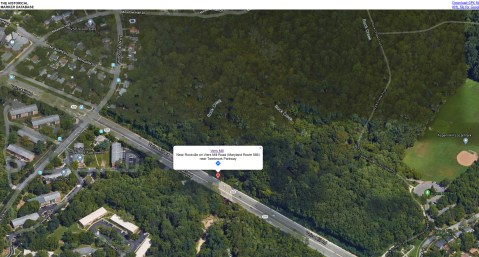
Veirs Mill historical Marker is located on Viers Mill Road near Twinbrook Parkway, on the right when traveling west.
Montgomery County High School, 1911 Rockville High School was established in 1892, when the state Board of Education first allocated funds to local school to educate high school students. In the first State report of school statistics nine years later, the Rockville school was listed as enrolling 47 pupils. The first 12 graduates received their diplomas from “Rockville High School” in 1897. In 1904, the Board of Education purchased land at the corner of Montgomery Avenue and Monroe Street for the construction of a new school building, to be renamed “Montgomery County High School” at Rockville.
When “Rockville Colored High School” opened in 1935 at Lincoln School in Lincoln Park, the School Board officially renamed the school for white students “Richard Montgomery High School.” Five years later, a fire destroyed the old building. The board purchased land near the old Rockville Fairgrounds, adjacent to the new Park Street Elementary School, and in 1942 students paraded from Monroe Street to their new school at the current site.

Originally known as Montgomery County High School, later as Rockville High School and Richard Montgomery High School. Located at the corner of Monroe Street and East Montgomery Avenue. Photo by Lewis Reed, 1911
Montgomery County Maryland Almshouse, 1912 The 50-acre tract which includes a pauper’s graveyard was once part of the Montgomery County Poor Farm, established in 1789 as a place where the poor and homeless went to live, work, and, if they died, to be buried. At the time, the farm was located well beyond the bounds of what was then the town of Rockville. But growth eventually caught up with the property. The farm house was razed in 1959 to make way for a county jail, and another chunk of property was dedicated for I-270. At least 75 graves were identified during a 1983 survey of the property by state archeologists, but according to George R. Snowden, funeral director, there may be as many as 500 people buried in the potter’s field.
A modern jail is on its site on Seven Locks Road adjacent to I-270. Reportedly, there was a “Potter’s Field” burial ground nearby. Some small markers were visible several years ago, along a dirt road across I-270 that marks the future Monroe Street. There are no remaining above-ground resources related to the Poor Farm at this site.
Montgomery House Hotel, 1912 The Montgomery House Hotel, across Courthouse Square from the Red Brick Courthouse in Rockville, served as Confederate General Jubal Early’s headquarters during the Civil War. A hotel of the Rockville resort era, it was owned in 1879 by M. A. Almoney later by John Kelchner. After World War I it became known as the Dixie Tavern. The Montgomery House was located on Court House Square until it was torn down. The Montgomery House no longer stands. Its site is now the NW corner of Maryland Avenue and Courthouse Square and is occupied by a modern office building.
Rockville Baptist Church, 1912 The Baptist Church was located on the SW corner of South Washington and Jefferson Streets from about 1908 until the early 1970s. It cost $14,671 and was built largely through contributions of Spencer C. Jones, son of the first pastor Joseph Jones. A parsonage was constructed next door in 1914. The church sold its property in 1971 and moved to a modern structure on Adclare Road. A BB&T bank building replaced the church and parsonage in 1974.
Clinton Zion A.M.E. Church in Rockville, 1912 In 1867, several of Rockville’s African American families left Jerusalem Methodist Episcopal Church to start the African Methodist Episcopal (A.M.E.) Zion Church under the leadership of Reverend Charles Pipkins. In 1890, Pipkins and his congregation cut timbers and erected. a frame church on Middle Lane. The congregation sold the brick church in 1955 to make way for a shopping center, dedicating their present church on Elizabeth Avenue in Lincoln Park in the fall of 1956. The growth of Clinton was the impetus for the most recent expansion effort. Construction of the new sanctuary began in 1989 and the newly renovated edifice was dedicated on Sunday, May 13, 1990.

The Pump House at Croydon Park, 1912 Built in 1897, the Pump House is a significant historical landmark. Once known as the “Rockville Electric Lights & Water Works,” the building was the City’s first public water system and supplier of electricity for street lights and private homes. By 1957 a new water treatment facility was opened, drawing water from the Potomac River. With the new plant, the City stopped the use of the wells at the Pump House and renovated the building for the Public Works Department. They remained there until 1962 when the building was slated for demolition.
By 2009, the facility was in dire need of a significant upgrade for use. The City of Rockville completed a full interior and partial exterior renovation of the Pump House and on January 9, 2011, the City rededicated the building.
East Montgomery Avenue Near the Court House, 1914 The shops sold groceries, baked goods, sewing machines, hats, lumber, and hardware. Families lived above their stores, renting rooms to others. From right to left is the H. Reisinger Bakery, Confectionery, Ice Cream and Lunch Room, 5 and 10-cent Bargain Store, W. Hicks General Store, Suburban Electrical Company (SECO), and a two-story dwelling.
Washington Hicks operated the general or dry goods store in Rockville from the late 19th century until 1940. His son W. Guy Hicks continued to run the store until his retirement in the late 1950s. The upper story of the building was the living quarters of Mr and Mrs B. F. Hicks. The building was later acquired by W. Valentine Wilson, who tore it down and replaced it with the “SECO” for Mr Wilson’s Suburban Electric Company. The ground floor was made into a moving picture theater in 1915. Sidney Lust took over the operation of this theater between 1931 and 1935 and renamed it the Arcade. He closed it down on April 21, 1935 and opened the new Milo later that year.
Red Brick Courthouse in Rockville, 1914 The Red Brick Courthouse is not the first courthouse in Montgomery County, but it is the oldest. When Montgomery County was established in 1776, a tavern served as the first courthouse and the County seat was located at the rural but central crossroads of what was to become Rockville. Completed in 1891, the Red Brick Courthouse was the County’s fourth courthouse.
During the 1970s, the Courthouse was renovated and used by the Sheriff and the Circuit Court. When the new Judicial Center opened across the street in 1982, the Red Brick Courthouse ended nearly a century of continuous judicial use. Today, the Red Brick Courthouse serves as headquarters for Peerless Rockville and continues to serve as a working courthouse for Montgomery County.
St. Mary’s Catholic Church, 1914 Built in 1817, St. Mary’s is the oldest church still in use in Rockville. Rockville was chosen for the church location for its relatively large concentration of Catholics, its central location, and its prominence as the County seat. St. Mary’s became the church from which other up-county mission churches sprang.
Today, the church overlooks the same intersection of roads now called Veirs Mill Road and Rockville Pike. With the 1950s addition of Hungerford Drive as a bypass to Rockville’s commercial street, this is a busy intersection. It is arguably the symbolic cross-road for the county, and locals refer to it as “the mixing bowl” for its unconventional configuration and heavy volume of traffic. The church’s prominent location and its connection to author F. Scott Fitzgerald, who is buried in its cemetery, contribute to St. Mary’s status as a landmark in Rockville.
Reed Brothers Dodge, 1915 One of the automaker’s first franchised car dealerships in the nation, opening in 1915, Reed Brothers Dodge was a longtime presence on the prominent triangle formed by the Rockville Pike and Veirs Mill Road. Also the first Gulf gas station in the DC area, it was a three generation business for 97 years. In recognition, the state of Maryland named the connector street behind the original location, “Dodge Street,” commemorating Reed Brothers’ presence from 1914-1970. When the state widened the roads in 1970, the dealership relocated to Route 355 at the Shady Grove Metro.
Montgomery County Court House, 1917 On September 28, 1917 a draft for World War I began and the first 40 men reported for duty at the Montgomery County Court House in Rockville. In the photo below, cars are parked around the court house during the speech-making in the court room to drafted men. Montgomery County’s first recruits left Rockville by train for Camp Meade, Maryland on this same day. They each received a package of smoking tobacco and a rousing send-off from two thousand people after speeches at the courthouse, dinner at the Montgomery House Hotel, and a parade to the depot. About 160 Rockville men served in the eighteen-month war. One of those men was Rockville resident, Edgar Reed. Edgar was fortunate enough to survive World War I and to settle back in Rockville and enjoy a successful life and career in the automobile business.
Notice that most of the cars in the photo have two license plates: at this time, you needed a separate tag to drive a car in the District of Columbia. There is also horse dung in the dirt road (E. Montgomery Avenue), suggesting buggies had been by recently as well. Barely visible in the background left is the Maryland National Bank building, which was demolished during urban renewal in the late 1960s.

Grey Courthouse in the foreground, Red Brick Courthouse in the middle ground, and the Judicial Center in the background.
First Montgomery County Police Department, 1922 Posing in front of Reed Brothers Dodge on July 4, 1922 Chief Charles Cooley, center, and his men of the first mounted unit of the Montgomery County Police Force, were on their first day of duty. For several years, since there was no police station, the officers would meet for “roll call” on the steps of the Red Brick Courthouse in Rockville at 2:00 p.m. every day to let each other know they were alive and well. Chief Cooley was given the privilege of a Model T Ford. The chief was paid $1,800 a year (the chief now gets $112,564) while the officers got $1,500. Each of the officers was issued a Harley-Davidson motorcycle, a .38 Smith & Wesson handgun, a black jack, law book and was allotted $300.00 a year for the upkeep of their motorcycle. Today, the Motor Unit fields twenty-eight 2007 and 2008 Harley-Davidson Police motorcycles of which four to five are assigned to each of the district stations.

This is the first known photograph of the entire MCPD. Pictured left to right: Earl Burdine, Lawrence Clagett, Guy Jones, Chief Charles Cooley, Leroy Rodgers, and Oscar Gaither. Photo taken by Lewis Reed on July 4, 1922.
Rockville Fair Dirt Track Oval, 1923 Like many fairgrounds, the Rockville Fairgrounds included an oval track. Fairground race tracks, typically one-mile or half-mile dirt racing ovals with wide, sweeping curves and grandstands for spectators, were easily adapted for bicycles, harness racing, and the sport of car racing. Harness racing was one of the main attractions, but after the introduction of the automobile in the early 20th century, car races took over. The fairgrounds were just outside Rockville, where Richard Montgomery High School is today. In 1946, after the construction of Richard Montgomery High School, the old oval race track became a football field and stadium.







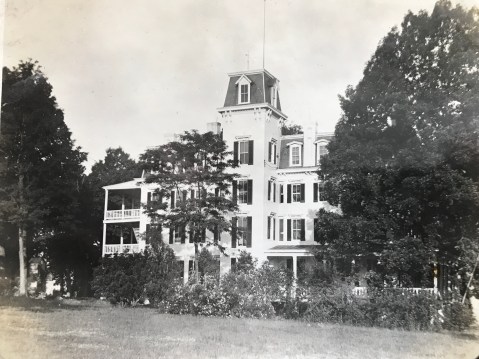
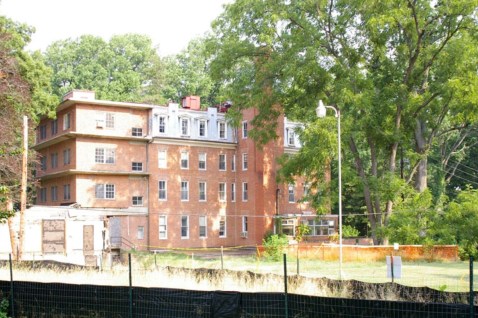




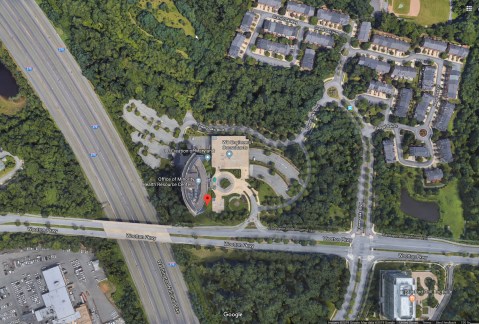





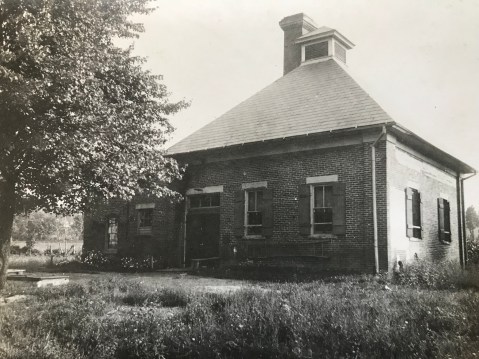
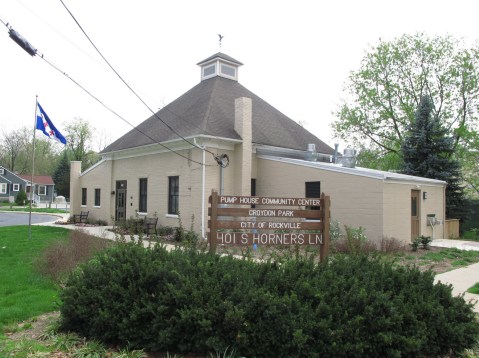
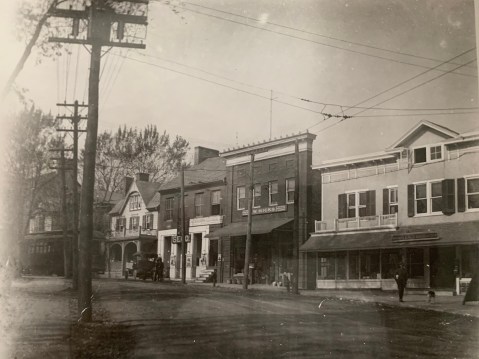



















Great pics and great fun as usual Jeanne. Thanks!
I love this blog. Such great info for those of us who love Rockville and its history. My family has deep roots in Rockville. When I see that photo of the old train crossing, I can remember my mom telling me she heard that crash, as she was a small child. My parents also helped integrate St Mary’s. And my great Uncle Raymond (George Waters) worked for Reed Brothers.
Hi Jacki,
I really appreciate you stopping by and taking the time to leave such a nice comment. So happy you enjoy the blog! Of course, I remember George very well. He was a very kind man and actually holds the distinction of being among one of the longest tenured employees in Reed Brothers Dodge history. You might enjoy reading this, if you haven’t already >> https://reedbrothersdodgehistory.wordpress.com/2018/12/17/meet-george-waters-one-of-reed-brothers-longest-tenured-employees/
My Best Regards,
Jeanne
Jeanne:
I’ve shared your blog with my family, and we are taking about it via text. We were all raised in Rockville (Hay-ti) with connections to Lincoln Park and enjoy discussing history. My sister is even doing a lot genealogy work.
My mom and Uncle Raymond (George) were very close for their entire lives.
I actually came across your blog some time ago and bookmarked it. I’ve been trying to sit down and read all the info you have on there. Good work.
As a matter of fact, I read and shared the info about the sculpture near Shady Grove metro with my husband not long ago.
Rockville is a treasure chest of historical info and my fam loves it and loves your blog.
I’m going to read this link and share it with my family.
Thank you!
Thanks for all the info, I recall siting in Saint Mary’s school as a boy in the late 60s / early 70s and looking at the cool ramp that allowed a car to go up to the second story — shows in one of your photos.
Hi Joe,
My grandfather used to take me up that concrete ramp when I was a little kid. It was very steep! I remember hanging onto the railing for dear life so I wouldn’t slide back down. 😬
I’m so glad the post evoked such fond memories for you of that time in your life.
Best Regards,
Jeanne